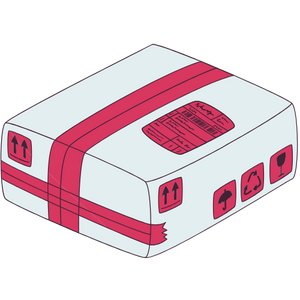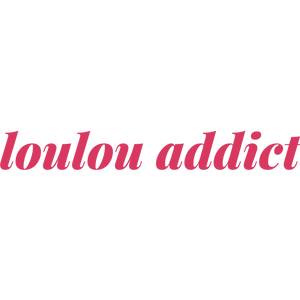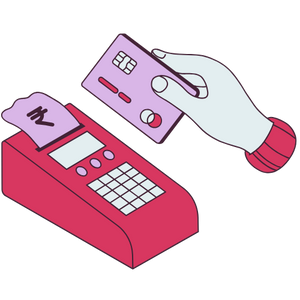Lochia
Bleeding after childbirth is normal. Heavy bleeding after having a baby is also pretty normal—it’s called lochia.
This unusual name refers to the bleeding—ranging in intensity—that a woman experiences after childbirth, once she leaves the maternity ward. From the ancient Greek lokheia meaning childbirth, lochia mark the first days of the postpartum period, a unique time in a new mother’s life.
With hemorrhoids, urinary leaks, healing after an episiotomy or C-section, various kinds of pain, fatigue, psychological challenges (baby blues or, in more severe cases, postpartum depression), and fluctuating hormones, postpartum recovery can be tough for new mothers.
These normal bleedings allow for the expulsion of leftover mucous membrane and lymphatic secretions, among other things, from the vagina that couldn't be expelled during delivery.
In short, lochia help finish cleansing the vagina after childbirth by expelling any remaining placenta and other residues. How do you manage lochia and what should you use to absorb it? Which postpartum underwear should you choose? Find out everything you need to know about this specific type of bleeding.
In this article
Become an expert on lochia
Nothing beats a quick Q&A to give you all the info you need about postpartum bleeding.
When does lochia start?
Lochia occurs after childbirth. Afterpains (uterine contractions) help expel lochia from the vagina. So after giving birth, new mothers experience some uncomfortable contractions similar to menstrual cramps.
What do lochia look like? What should I expect?
A new mom loses about 500 ml of blood after giving birth. Lochia is similar to a period, but much more intense and heavier, especially in the first few days after delivery. It’s also common to see bloody clots.
How long does postpartum bleeding (lochia) last?
Lochia lasts from a few days to several weeks. On average, this type of vaginal discharge goes on for about twenty days, which is how long it takes for the uterine lining to heal.
What are the different types of lochia?
Bright red and heavy the first few days, lochia is a postpartum discharge that’s heavier than your period and contains clots of varying sizes. Over time, the flow lessens and calms down. The light bleeding then becomes less intense and lighter. Lochia changes from red to pink or brown. After several more days of random spotting, it can turn a lighter yellow or white color.

Do lochia occur after both a C-section and a vaginal birth?
Yes, lochia occur after both vaginal delivery and a cesarean section. Good to know: lochia are less intense after a C-section than after a vaginal birth.
When should I be worried?
If you notice you have a fever, experience intense pain in your abdomen, legs, or have a headache, consult your gynecologist or midwife! Also, if your vaginal discharge suddenly becomes very heavy (when it should be decreasing), or if you notice a large blood clot or clots, or a strong odor on your postpartum pad, see your doctor or a healthcare professional!
High-quality postpartum protection to manage lochia
Absorbent, gentle maternity pads to care for a mother’s intimate area—this is a priority you should plan for!
Postpartum panties: an essential intimate protection
New moms doing pelvic floor and abdominal rehab will be glad to rely on high-quality, well-cut, comfortable, organic, and soft absorbent underwear.
Along with maternity pads and postpartum pull-up diapers, postpartum period underwear is a little essential that can really make daily life easier.
Absorbent panties are a great idea for postpartum intimate protection for new moms!
Economical, eco-friendly, comfortable, absorbent, leak-proof, reliable, soft, and pleasant—the postpartum panty has it all, so go for it!
A postpartum panty for lochia, but not just for that
Lochia, but also small postpartum bleeds, urinary leaks, or postpartum bleeding—moms experience several phases of bleeding and various discharges in the weeks and months following childbirth.
So investing in the right postpartum underwear and high-quality postpartum panties is a wonderful idea. Period panties or menstrual underwear can be extremely useful in many situations!
Classic period underwear can absorb and retain vaginal bleeding, but also light urinary leaks (common when the pelvic floor is weakened).
Reusable, durable, and washable, the postpartum underwear should definitely be on every baby registry list! Once the postpartum period has passed and breastfeeding is over, moms can of course continue to use this menstrual underwear for their periods, once their hormonal and menstrual cycles have returned.
Good to know: your first periods after giving birth can be irregular and/or very heavy.
Louloucup’s postpartum collection: ultra-absorbent and comfortable underwear
Looking for absorbent protection made from certified organic cotton (Oeko-Tex standard), well-fitted and available in a wide range of sizes? Louloucup has you covered with a line of plus-size period underwear (so you can embrace your pregnancy weight without shame!) and a beautiful selection of postpartum underwear!
High-waisted, with extended absorbent zones, sturdy and reliable—our postpartum underwear is truly essential.



Our top picks to keep you dry, odor-free, stress-free, and comfortable during postpartum:
- the postpartum panty Liv,
- the post-partum underwear Jade,
- and the post-pregnancy underwear Mathilde.
In addition to being extremely absorbent (with a capacity equal to 5 pads), these three styles are available in sizes XS through 2XL, 3XL, 4XL, and 5XL.
They provide reliable leak-proof protection, especially on days with heavy vaginal discharge. They’re also great for light urinary leaks. Once your postpartum bleeding is over (hooray!) and your period returns, these postpartum panties make perfect regular period panties you can reuse every month!
And if you’re in the mood for a swim, don’t forget our postpartum period swimwear. They’ll help you get back to the pool with total confidence!
 Did you like this article? Pin it!
Did you like this article? Pin it!





































